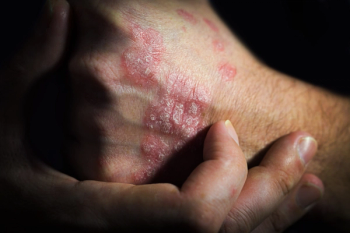
INCA33989 Shows Disease-Modifying Potential With Favorable Safety in Essential Thrombocythemia: John Mascarenhas, MD
John Mascarenhas, MD, discusses phase 1 data showing that INCA33989 is a well-tolerated therapy for calreticulin–mutant essential thrombocythemia, with early signs of efficacy and potential disease modification.
In part 2 of a conversation with The American Journal of Managed Care® following the
Watch
This transcript was lightly edited; captions were auto-generated.
Transcript
What were the key findings from the INCA33989-101 and -102 trials? Were there any results that particularly stood out or surprised you?
The key findings, first and foremost, [it] was [a] super well-tolerated drug. We did not identify dose-limiting toxicity; we did not hit a maximally-tolerated dose. There were very few significant adverse events that we think are attributable to the drug. The only thing that was interesting, and I don't think clinically meaningful but interesting, was [that] we caught a number of patients with an asymptomatic increase in their lipase level without clinical manifestations of pancreatitis or radiographic findings; this was transient. [It was] not clear that it was drug-related, but that was really the only thing that stood out.
Otherwise, it didn't induce myelosuppression. We didn't see thrombocytopenia, we didn't see concerning nonhematologic toxicity, so it was really well tolerated, probably one of the most well-tolerated therapies that I've had the privilege of working with over 20 years in this space. Hence, in a global study, not just one center, in a global study, we did not identify a dose-limiting toxicity or even a maximally tolerated dose. First and foremost, [it's a] really safe drug to use in patients with mutant CAL-R [calreticulin] MPN [myeloproliferative neoplasm].
How does the safety profile of INCA33989 compare with that of existing therapies for essential thrombocythemia (ET)?
ET therapies tend to be hydroxyurea, anagrelide, interferon alfa-2B mostly, ropeginterferon, then sometimes ruxolitinib off label, which all have definite positives. These are active agents, so none of these agents are bad agents, but they also are insufficient agents for most patients or have some potential toxicity.
I would say, out of all of those agents in ET, probably the most recent data from the
It was really looking at a second-line group of patients. The toxicity profile of this [INCA33989], I would say, is very favorable compared [with] the other therapies, which all have activity but have some degree of toxicity that's associated with those drugs. What I think sets this antibody apart from those, besides the fact that it is this immunotherapeutic approach to mutant CAL-R disease, and is very well tolerated, is the efficacy results that we saw in a phase 1 early study, which you don't typically see.
We saw [a] very rapid normalization of platelet counts, even within the first dose, particularly in the cohorts of 400 mg and higher. That was maintained over the study period. Platelet count normalization was very obvious. We also have data that we'll present, showing other biomarkers, like LDH [lactate dehydrogenase] normalization, white [blood cell] count normalization, etc.
It clearly works, and what was, I think, even more exciting than the fact that it was well tolerated and can normalize platelets, were the biomarker results very early on in a phase 1 study. We saw significant reductions in mutant CAL-R variant allele fraction from the peripheral blood, suggesting that it's changing the disease behavior.
That was associated with changes in the bone marrow, demonstrating [a] reduction in mutant CAL-R megakaryocytes in the bone marrow, with concomitant increase in normal or wild-type nonmutated CAL-R megakaryocytes in the bone marrow. Again, suggesting that there were aspects of the disease in multiple compartments of the disease that were being modified, [which] would suggest, even at an early time point in the phase 1 first-in-human study, disease modification.
To me, that was really exciting because it offers the potential, the hope, that with such an approach, we could not just control the platelet count, which it clearly does very easily and very safely, but modify the disease, reduce the burden of disease, maybe even remit the disease. As we use these doses, the higher doses, and follow the patients over time, I think we'll have more robust data from the efficacy standpoint, because this was all just preliminary efficacy. It was all really safety data, [which] was the purpose of the phase 1 part.
We're now expanding those cohorts. We're going to look more intensely and rigorously at efficacy, so I'm really excited to see how that part pans out.
Newsletter
Stay ahead of policy, cost, and value—subscribe to AJMC for expert insights at the intersection of clinical care and health economics.












































